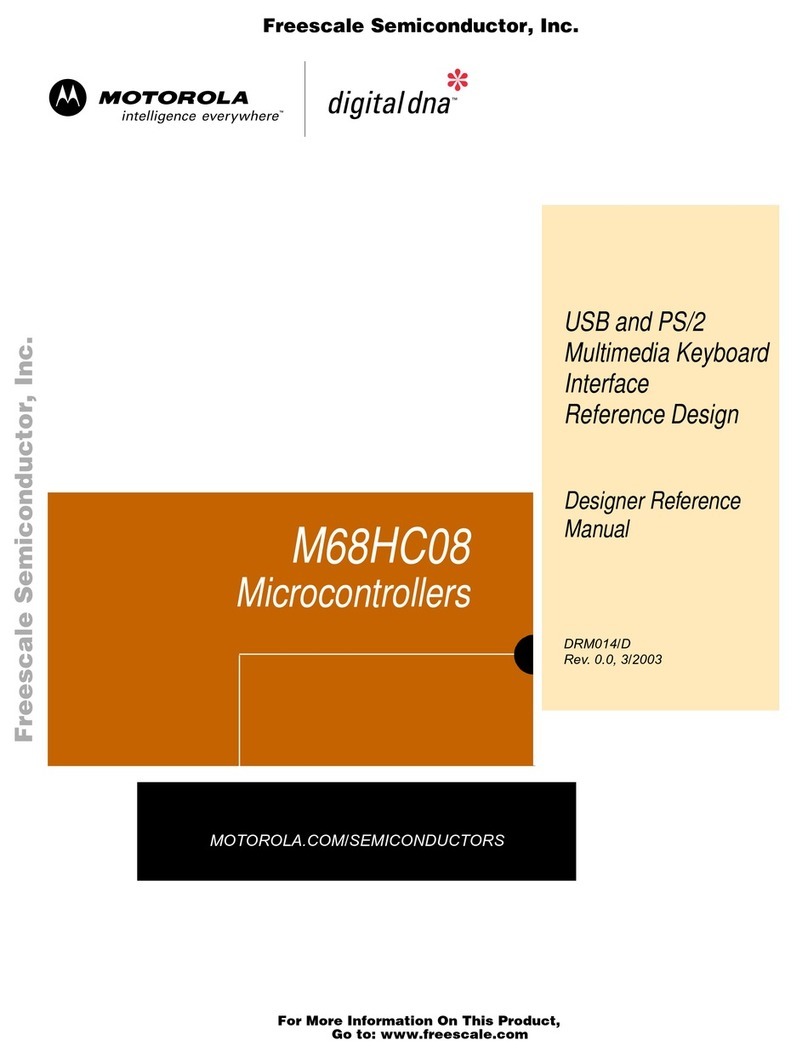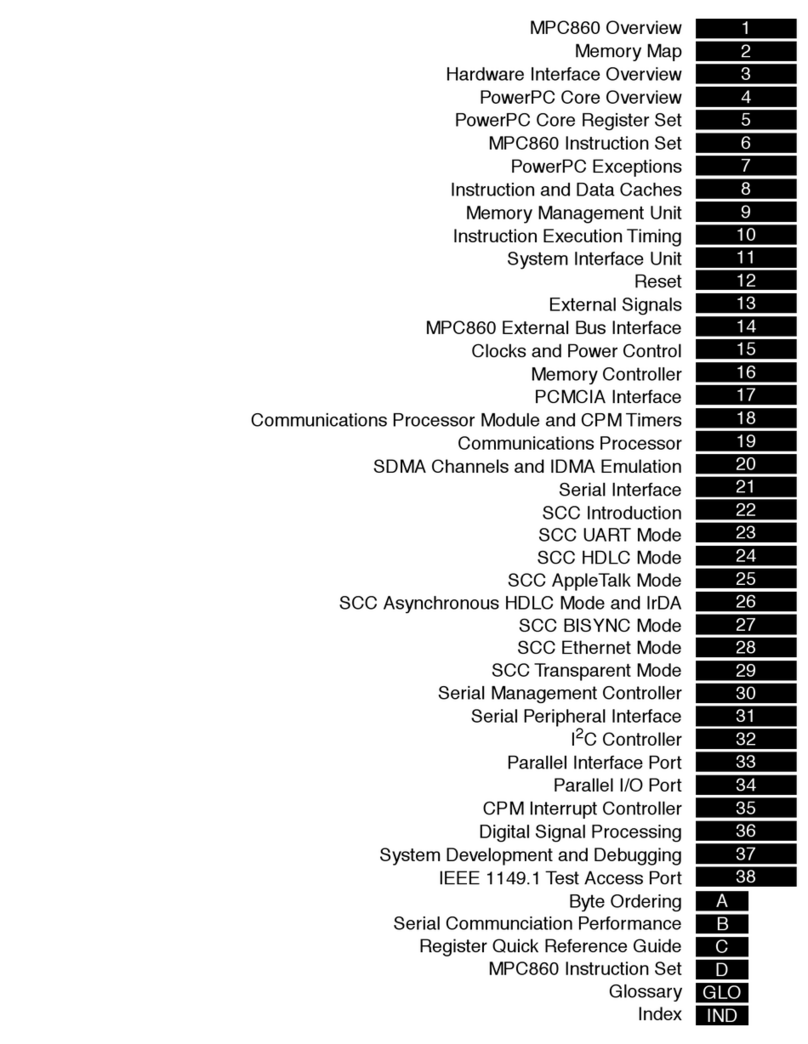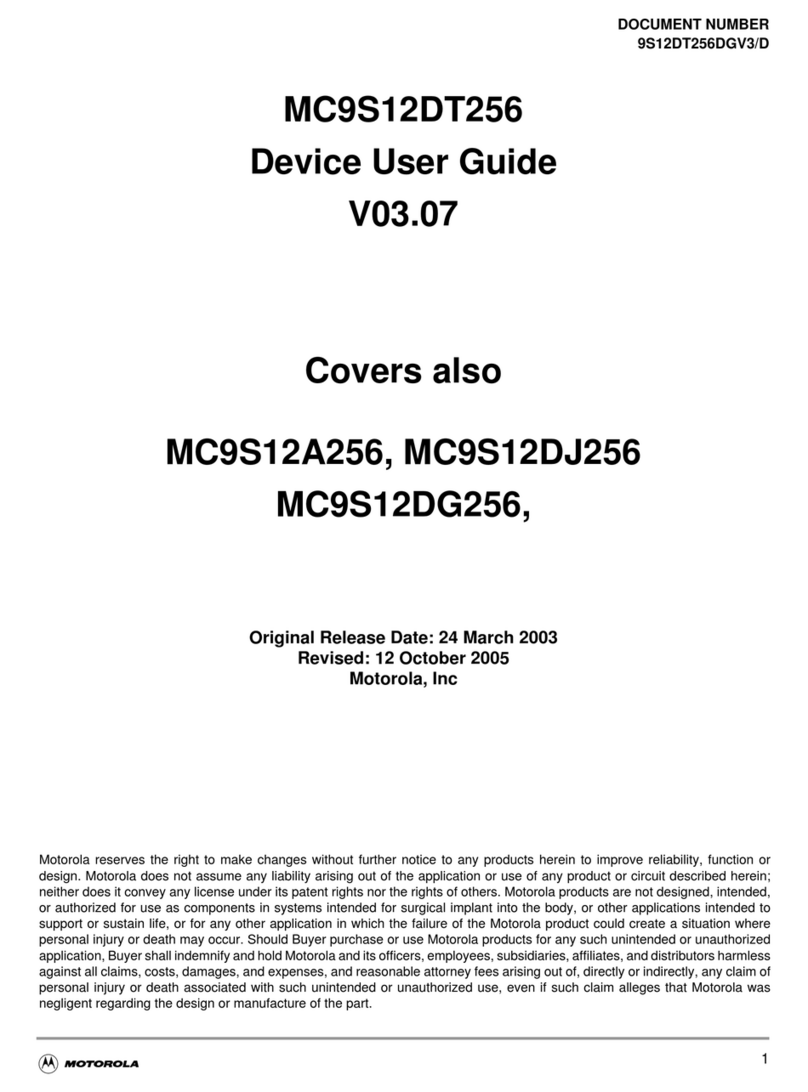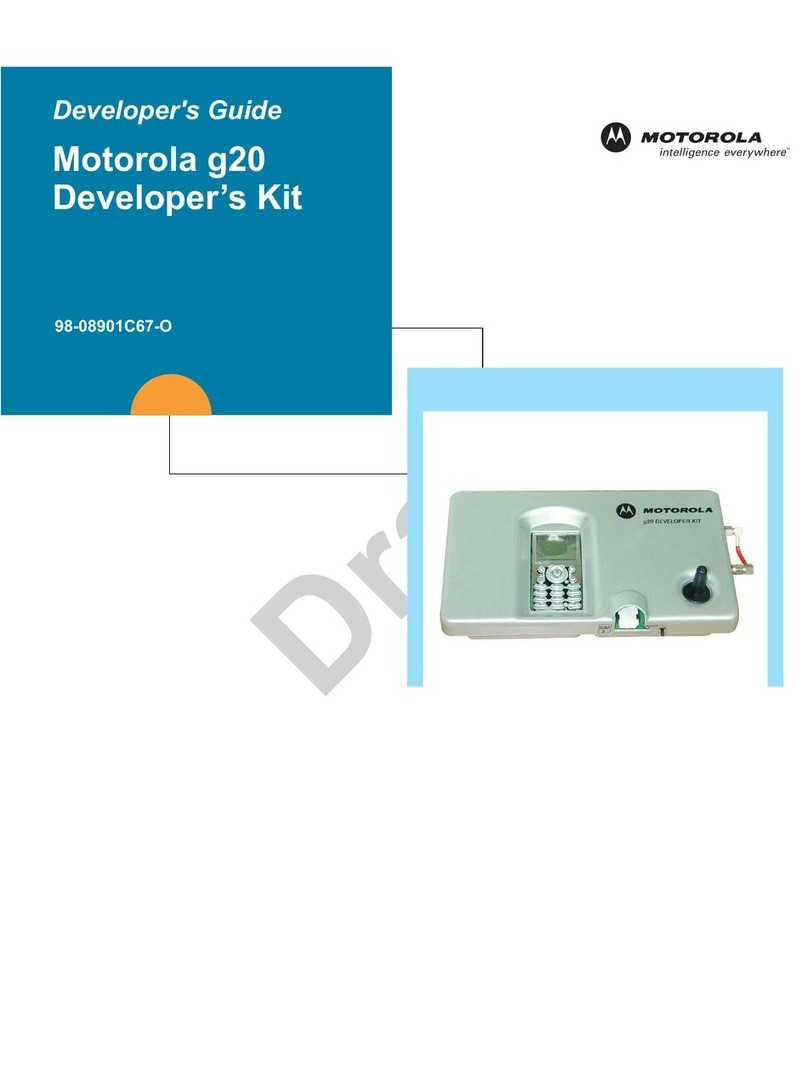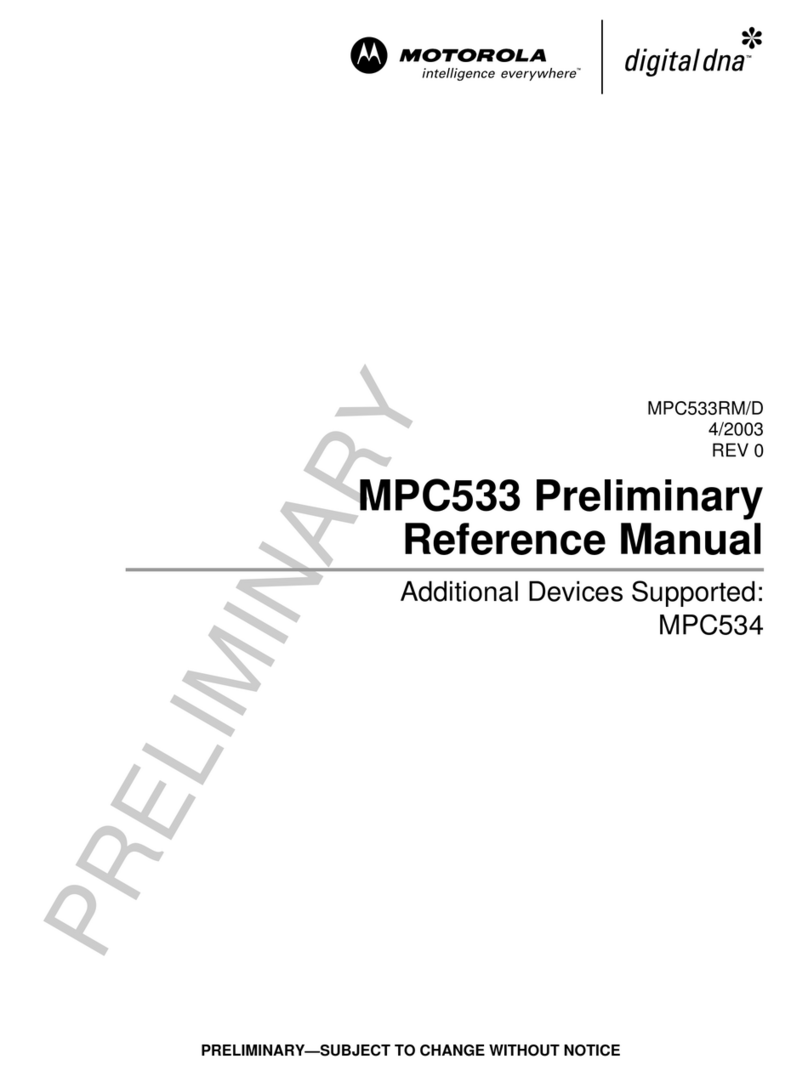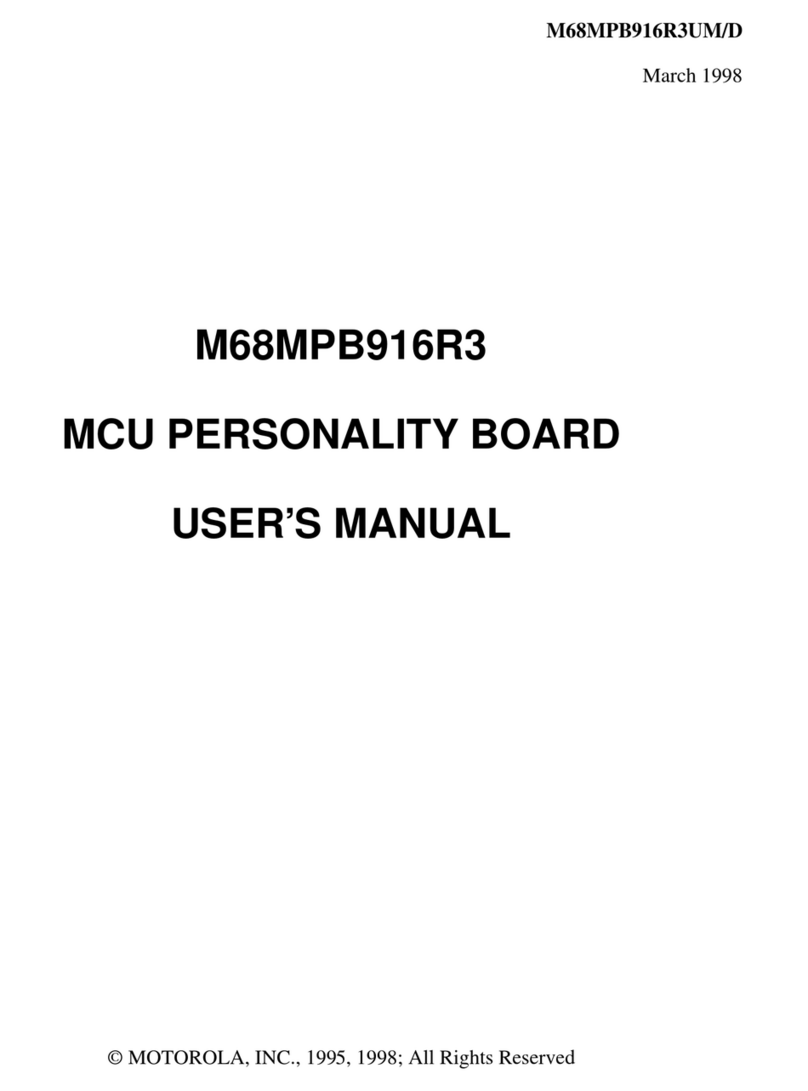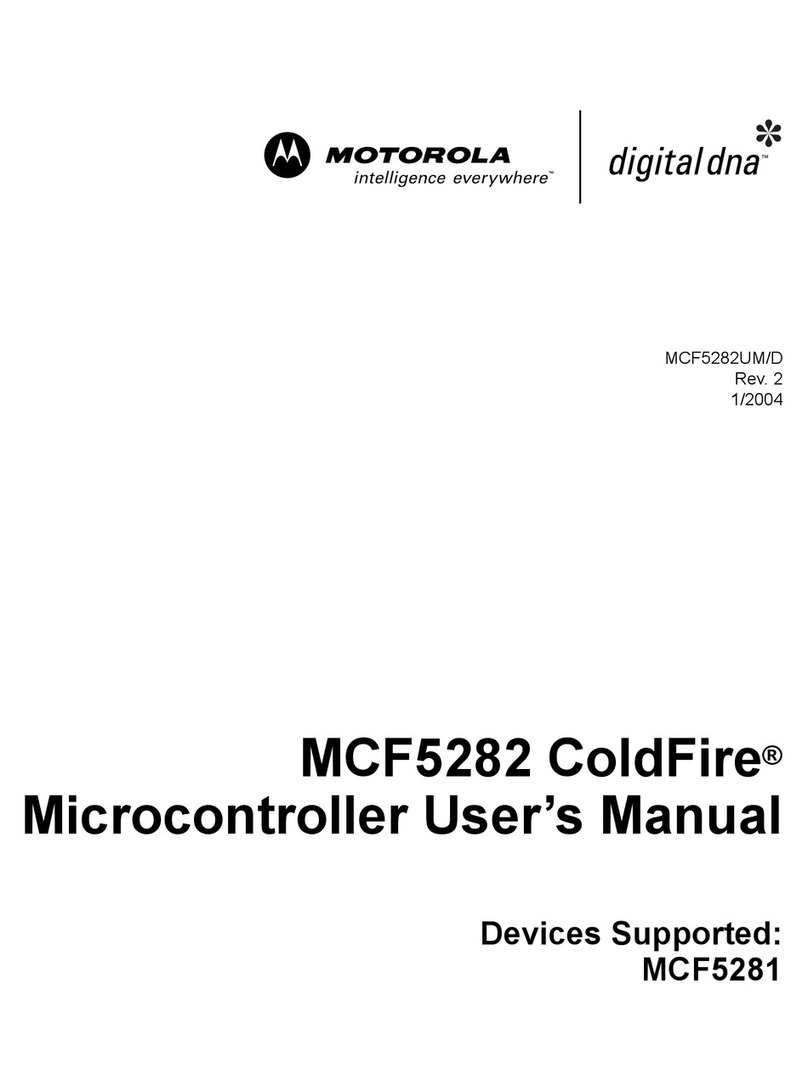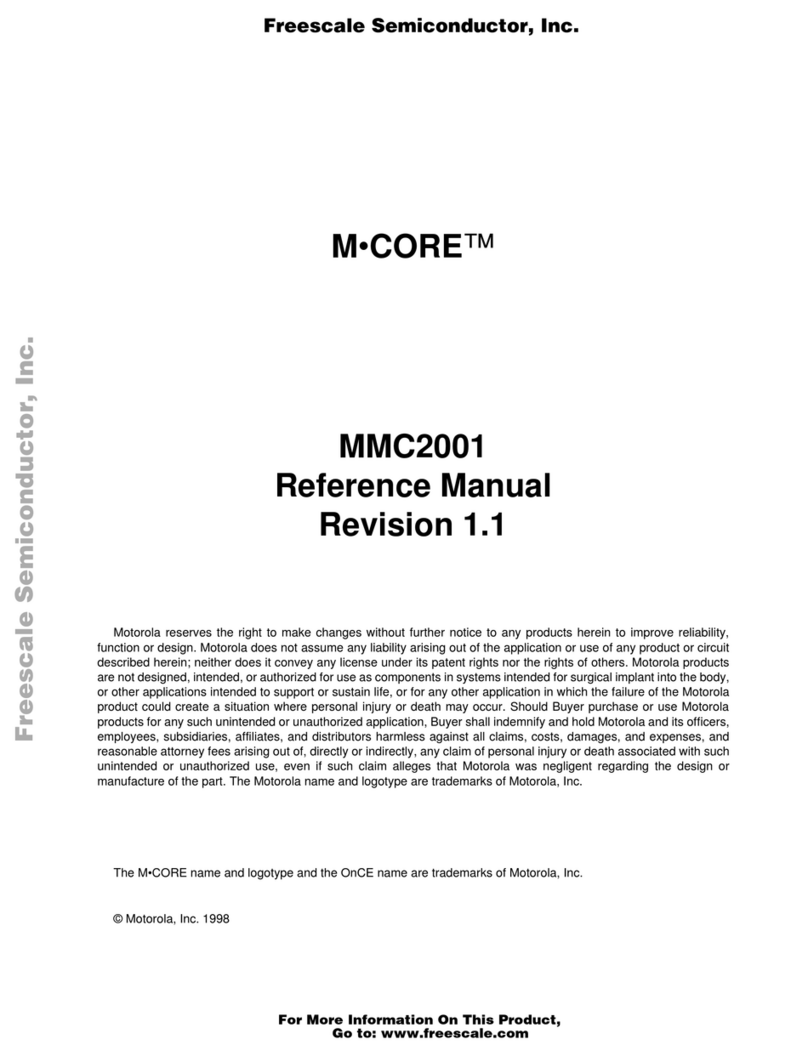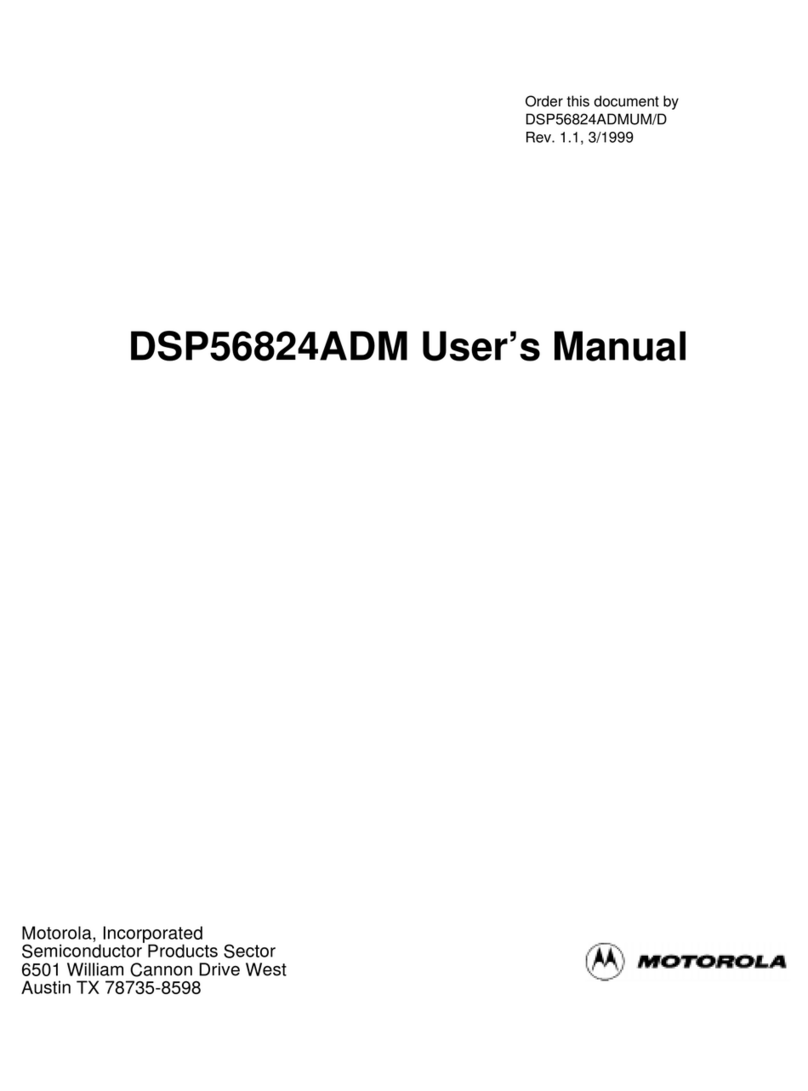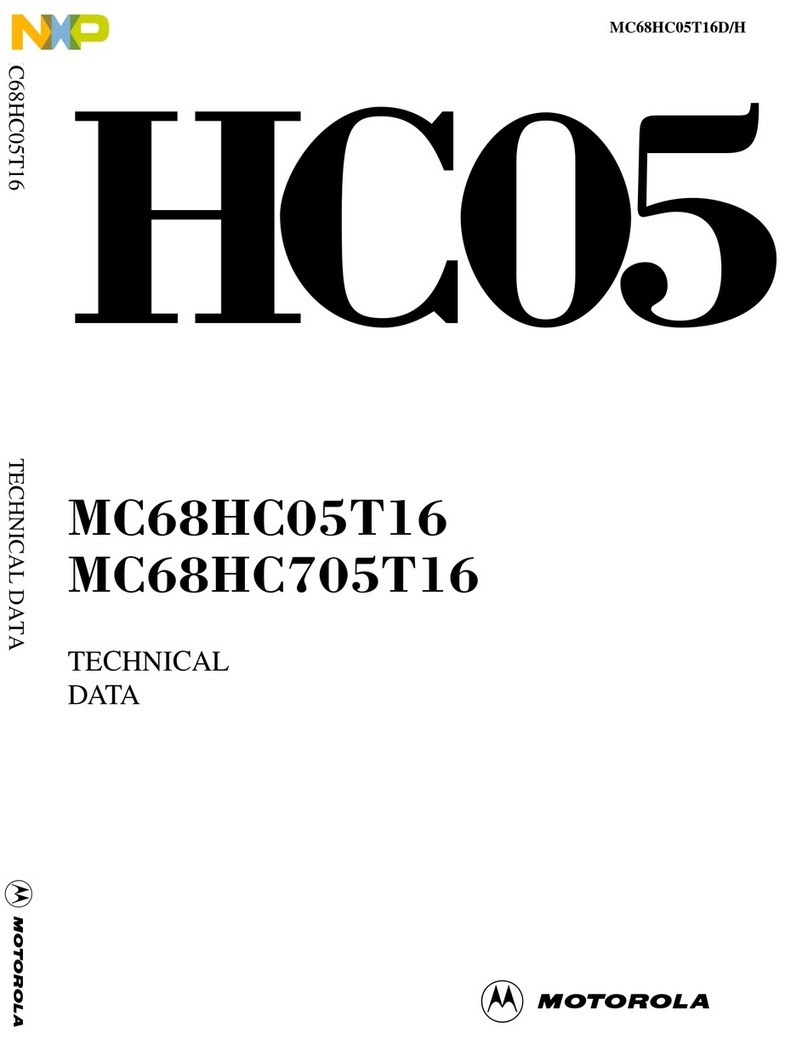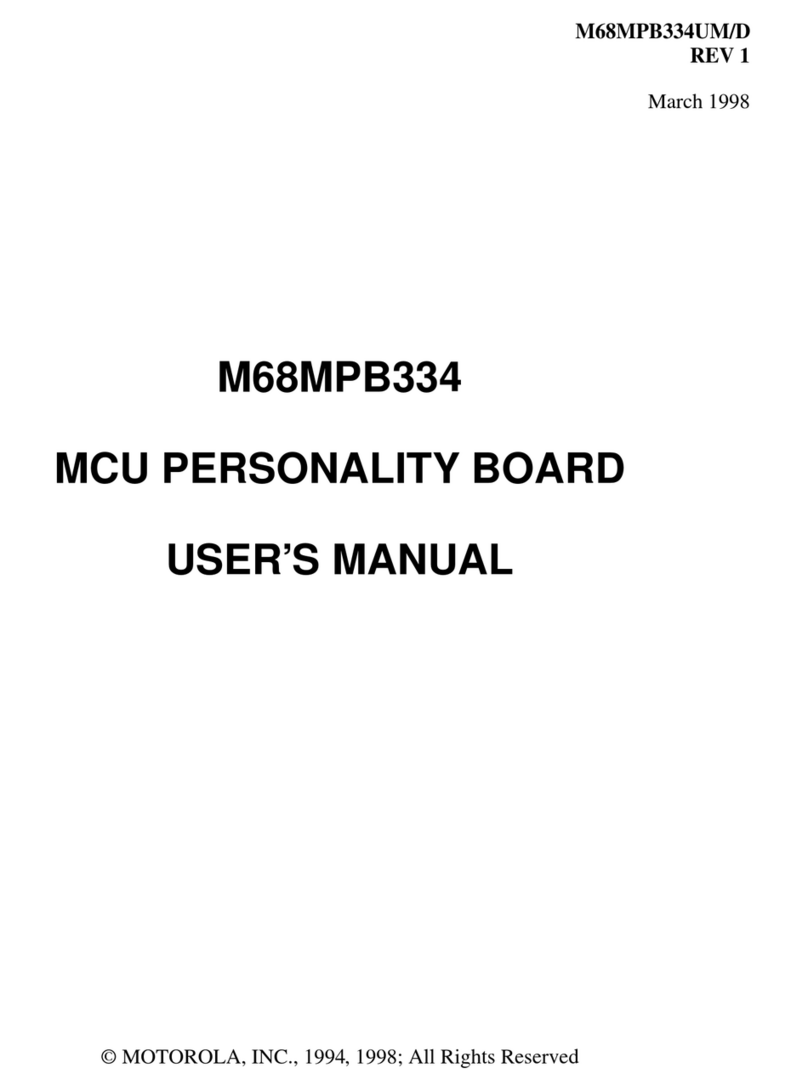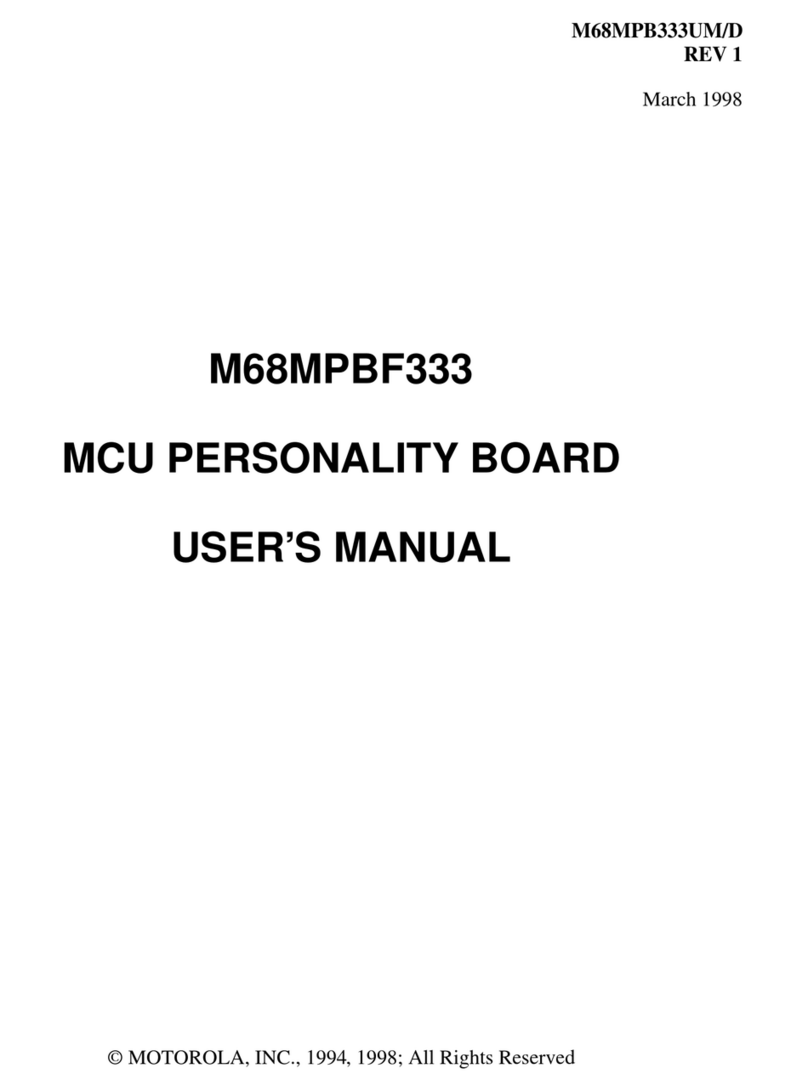
High Data Rate Wireless USB Optical Mouse Solution DRM055
MOTOROLA Table of Contents 5
Designer Reference Manual — DRM055
Table of Contents
Section 1. System Overview
1.1 Introduction. . . . . . . . . . . . . . . . . . . . . . . . . . . . . . . . . . . . . . . . . . . . . 9
1.2 Features . . . . . . . . . . . . . . . . . . . . . . . . . . . . . . . . . . . . . . . . . . . . . . 10
1.3 System Overview . . . . . . . . . . . . . . . . . . . . . . . . . . . . . . . . . . . . . . . 10
1.4 Transmitter and Receiver . . . . . . . . . . . . . . . . . . . . . . . . . . . . . . . . . 11
Section 2. RF Front End
2.1 Introduction. . . . . . . . . . . . . . . . . . . . . . . . . . . . . . . . . . . . . . . . . . . . 13
2.2 Functional Description . . . . . . . . . . . . . . . . . . . . . . . . . . . . . . . . . . . 13
2.3 RF Transmitter . . . . . . . . . . . . . . . . . . . . . . . . . . . . . . . . . . . . . . . . . 13
2.4 RF Receiver . . . . . . . . . . . . . . . . . . . . . . . . . . . . . . . . . . . . . . . . . . . 14
2.5 PCB Layout Guidelines. . . . . . . . . . . . . . . . . . . . . . . . . . . . . . . . . . . 14
Section 3. Universal Serial Bus (USB) Overview
3.1 Introduction. . . . . . . . . . . . . . . . . . . . . . . . . . . . . . . . . . . . . . . . . . . . 15
3.2 JB12 USB Module . . . . . . . . . . . . . . . . . . . . . . . . . . . . . . . . . . . . . . 15
3.2.1 USB Module Description. . . . . . . . . . . . . . . . . . . . . . . . . . . . . . . 16
3.2.2 USB Connection. . . . . . . . . . . . . . . . . . . . . . . . . . . . . . . . . . . . . 17
3.2.3 USB Protocol . . . . . . . . . . . . . . . . . . . . . . . . . . . . . . . . . . . . . . . 17
Section 4. Optical Mouse Transmitter
4.1 Introduction. . . . . . . . . . . . . . . . . . . . . . . . . . . . . . . . . . . . . . . . . . . . 19
4.2 System Overview . . . . . . . . . . . . . . . . . . . . . . . . . . . . . . . . . . . . . . . 19
4.2.1 QY4 Microcontroller . . . . . . . . . . . . . . . . . . . . . . . . . . . . . . . . . . 20
4.2.2 Optical Mouse Sensor . . . . . . . . . . . . . . . . . . . . . . . . . . . . . . . . 20
Section 5. Mouse Transmitter Firmware
5.1 Firmware Structure. . . . . . . . . . . . . . . . . . . . . . . . . . . . . . . . . . . . . . 21
5.2 Power Management . . . . . . . . . . . . . . . . . . . . . . . . . . . . . . . . . . . . . 22
5.3 Data Packet Format . . . . . . . . . . . . . . . . . . . . . . . . . . . . . . . . . . . . . 23
5.3.1 Coding Method . . . . . . . . . . . . . . . . . . . . . . . . . . . . . . . . . . . . . . 23
5.3.2 Packet Types . . . . . . . . . . . . . . . . . . . . . . . . . . . . . . . . . . . . . . . 23
5.3.3 Button Status and Z Displacement Packet . . . . . . . . . . . . . . . . . 24
5.3.4 X-Y Displacements Packet . . . . . . . . . . . . . . . . . . . . . . . . . . . . . 25
Freescale Semiconductor, I
Freescale Semiconductor, Inc.
For More Information On This Product,
Go to: www.freescale.com
nc...
